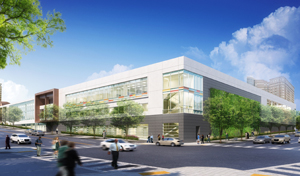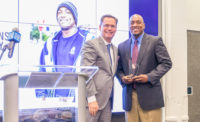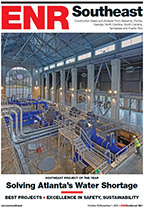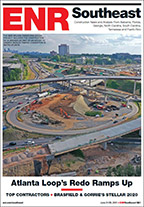Emory Healthcare of Atlanta has teamed with a private developer for construction of a $200-million proton therapy center in downtown Atlanta. Brasfield & Gorrie, Kennesaw, Ga., is building the 107,000-sq-ft oncology center for San Diego-based developer Advanced Particle Therapy. VOA Associates is the project architect. Perkins + Will is serving as the landscape architect.

To accommodate a scheduled one-year period for equipment testing and commissioning, Brasfield & Gorrie plans to construct the project in two phases. "Phase one will house the equipment and the phase two footprint will serve as a staging area for the equipment delivery and installation," says Dan Spinetto, vice president with Brasfield & Gorrie.
The project's second phase will be completed over a 12 month period, Spinetto adds. "This 12-month period coincides with the equipment commissioning duration and allows the entire facility to come on line at the same time," he says. The facility is scheduled to open by summer 2016.
The cancer-treatment center will utilize a new form of proton therapy called pencil-beam scanning in all five of its treatment rooms, requiring 16-ft-thick shielding walls.
"The concrete proton bar will require multiple 1,000-plus cubic-yard concrete pours, requiring urban logistics for delivering the concrete ready mix to the site as well as mass concrete pour temperature and curing control," Spinetto says. He adds that "building curb to curb" in this urban environment will be the project’s biggest challenge.
To accommodate the owner's schedule, the project team changed the clinical portion of the building to a steel structure that wraps around the concrete proton bar. The concrete proton bar will progress over a 10-month period while the clinic's steel structure is fabricated, Spinetto adds.
"The steel erection will begin within three months of topping out the concrete areas and complete two weeks after the concrete does," he says. "This strategy saved several months on the original schedule and will allow the exterior skin to begin much earlier."





Post a comment to this article
Report Abusive Comment